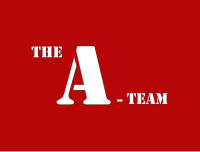
Photo from wikipedia
PURPOSE Leading a 4-km team pursuit (TP) requires high-intensity efforts above critical power (CP) that deplete riders' finite work capacity (W'), whereas riders following in the aerodynamic draft may experience… Click to show full abstract
PURPOSE Leading a 4-km team pursuit (TP) requires high-intensity efforts above critical power (CP) that deplete riders' finite work capacity (W'), whereas riders following in the aerodynamic draft may experience some recovery due to reduced power demands. This study aimed to determine how rider ability and CP and W' measures impact TP performance and the extent to which W' can reconstitute during recovery positions in a TP race. METHODS Three TP teams, each consisting of 4 males, completed individual performance tests to determine their CP and W'. Teams were classified based on their performance level as international (INT), national (NAT), or regional (REG). Each team performed a TP on an indoor velodrome (INT: 3:49.9; NAT: 3:56.7; and REG: 4:05.4; min:s). Ergometer-based TP simulations with an open-ended interval to exhaustion were performed to measure individual ability to reconstitute W' at 25 to 100 W below CP. RESULTS The INT team possessed higher CP (407 [4] W) than both NAT (381 [13] W) and REG (376 [15] W) (P < .05), whereas W' was similar between teams (INT: 27.2 [2.8] kJ; NAT: 29.3 [2.4] kJ; and REG: 28.8 [1.6] kJ; P > .05). The INT team expended 104% (5%) of their initial W' during the TP and possessed faster rates of recovery than NAT and REG at 25 and 50 W below CP (P < .05). CONCLUSIONS The CP and rate of W' reconstitution have a greater impact on TP performance than W' magnitude and can differentiate TP performance level.
Journal Title: International journal of sports physiology and performance
Year Published: 2022
Link to full text (if available)
Share on Social Media: Sign Up to like & get
recommendations!